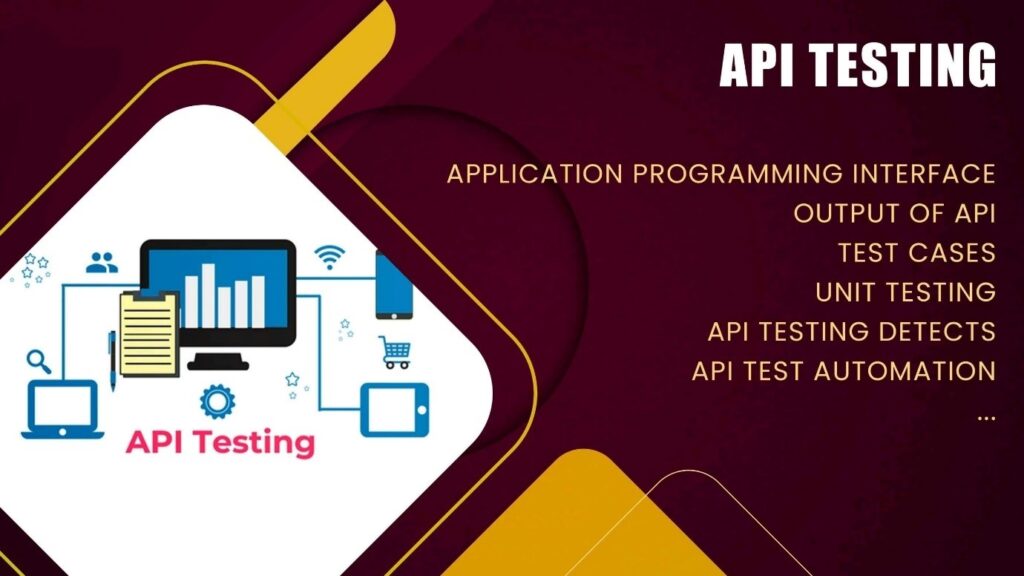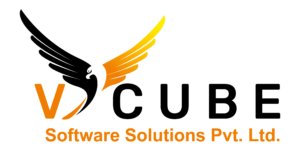API TESTING
API TESTING TRAINING
API TESTING: Application programming interface testing is a type of software testing that involves testing application programming interfaces (APIs) both directly and as part of integration testing to see if they meet functionality, reliability, performance, and security expectations. Because APIs lack a graphical user interface, API testing is done at the message layer. the API is directly from their functionally reliability performance to security.
DURATION:45 days

Curriculum for the API Testing Course
Introduction
- What is API Testing?
- Introduction to Web Service, SOAP, and REST
- Licensed Open-Source API Automation Tools
- Overview of Postman
- Overview of Rest Assured
Configuring Eclipse IDE
- Installation of Java
- Installation Eclipse IDE
- How to create new java project
- How to create a new java class
- Compiling and Running java class
Data Types and Variables
- Introduction to Java programming
- Primitive and Non-Primitive Data types
- Types of Variable (Local, Instance and Static Variables)
- What is an Array?
- Working with Single Dimensional and Two- Dimensional Arrays
Conditional Statements
- If else condition
- If else if Condition
- Switch case statement
- Examples for all the above conditions
Loop Statements
- While loop
- Do while
- For loop
- For each loop
- Examples for all the above loops
Classes and Objects
- How to create Classes, Objects and Object References
- Working with Constructors
- Working with Methods (instance, static)
- How to write user defined methods
Encapsulation
- What is Package
- Access Modifiers (private, default, protected and public)
- Encapsulation
Inheritance
- What is Inheritance?
- Why to use Inheritance?
- Single Level Inheritance, Multi-Level Inheritance
- super keyword this keyword
Polymorphism
- What is polymorphism?
- Compile time Polymorphism
- Method overloading
- Constructor overloading
- Runtime Polymorphism
- Method Overriding
- final keyword
Interface & Abstract Class
- How to define Interface
- How to implement Interface
- Multiple Inheritance (Through Interface)
- How to define Abstract Class
- Implements vs. extends
- Interface vs. Abstract class vs. Concrete Class
Exception handling
- What are exceptions and errors?
- Checked Exception or Compile time Exception
- Unchecked Exception or Runtime Exception
- How to handle exceptions in the program?
- Using try , catch and finally blocks
Collections
- Overview of Collections API
- List, Set, Map interfaces
- Working with elements of a Collection
- Examples for all the above concepts
Debug Java code / Scripts in Eclipse
- Understanding Debug
- Using Breakpoints
- Verify the values during debug
- Using step over, step into
Apache POI
- Configuration of Apache POI.
- Workbook,Sheet, Row , Cell Interfaces methods
- HSSF Workbook, HSSF Sheet, HSSF Row, HSSF Cell methods
- XSSF Workbook, XSSF Sheet, XSSF Row, XSSF Cell methods
- How to read data from Excel file(XLS or XLSX)
- How to write data to Excel file(XLS or XLSX)
TestNG
- TestNG Features
- Configuration of TestNG with Eclipse IDE
- Different TestNG Annotations
- Create a TestNG.xml file
- Reporting Results
- Assert methods
- Hard Assert vs. Soft Assert
- How to pass parameters using TestNG.xml
- How to use DataProvider
POSTMAN
- Download and Configure Postman
- GET,POST,PUT,PATCH,DELETE requests
- Overview of JSON and XML
- How to send Request and receive Response?
REST Assured
- Configure REST Assured with Eclipse IDE
- GET,POST,PUT,PATCH,DELETE requests
- Different Status codes in API Testing
- How to send Request and receive Response?
- Assertions in REST Assured
- Integration with Excel using Apache POI
- Request and Response Logging
- How to extract JSON response
- How to extract XML response
Maven
- What is maven?
- Creating Maven project in Eclipse
- Adding dependencies to pom.xml
- Maven Integration with Apache POI, TestNG
- Maven Lifecycle
- Executing Scripts Using Maven build tool
Jenkins
- Overview of Jenkins
- Configuration of Jenkins
- Configure Maven project in Jenkins
- Creating Jobs in Jenkins
- Scheduling Jobs for timely Execution
- Configure Email notification in Jenkins
- Integration with Jenkins (CI Tool)
GitHub
- How to create GitHub
- Configure Git and GitHub with Eclipse
- Git & GitHub Commands
Automation Life Cycle
- What is a Framework?
- How to implement Framework
- Framework Integration with Maven and Jenkins
Course's Key Highlights
![]() 100+ hours of learning
100+ hours of learning![]() Real-time industry professionals curate the course.
Real-time industry professionals curate the course.
![]() Internships and live projects
Internships and live projects
![]() A cutting-edge training facility
A cutting-edge training facility
![]() A dedicated staff of placement experts
A dedicated staff of placement experts
![]() Placement is guaranteed 100 percent Assistance
Placement is guaranteed 100 percent Assistance
![]() 28+ Skills That Are Useful in the Workplace
28+ Skills That Are Useful in the Workplace
![]() Trainers with a minimum of 12 years of experience
Trainers with a minimum of 12 years of experience
![]() Videos and back-up classes
Videos and back-up classes
![]() Subject Matter Experts Deliver Guest Lectures
Subject Matter Experts Deliver Guest Lectures
DESCRIPTION OF THE API TESTING COURSE
Best API Testing Training Institute in Hyderabad
WHY API TESTING IS SO POPULAR?
API (Application programming interface )testing entails testing APIs both directly (in isolation) and as part of end-to-end transactions performed during integration testing. These transactions include a variety of endpoints, including web services, ESBs, databases, mainframes, web UIs, and ERPs, in addition to RESTful APIs. API testing is performed on APIs created by the development team as well as APIs consumed by the team within their application (including third-party APIs). API testing is used to determine whether APIs return the correct response (in the expected format) to a wide range of feasible requests, respond appropriately to edge cases such as failures and unexpected/extreme inputs, and deliver responses in an acceptable amount of time.
Upskill & Reskill For Your Future With Our Software Courses
Best API Testing Coaching Center in Hyderabad

Quick Links
- Home
- About Us
- Courses
- Contact Us
Other Pages
Contact Info
- 2nd Floor Above Raymond’s Clothing Store KPHB, Phase-1, Kukatpally, Hyderabad
- +91 7675070124, +91 9059456742
- contact@vcubegroup.com

